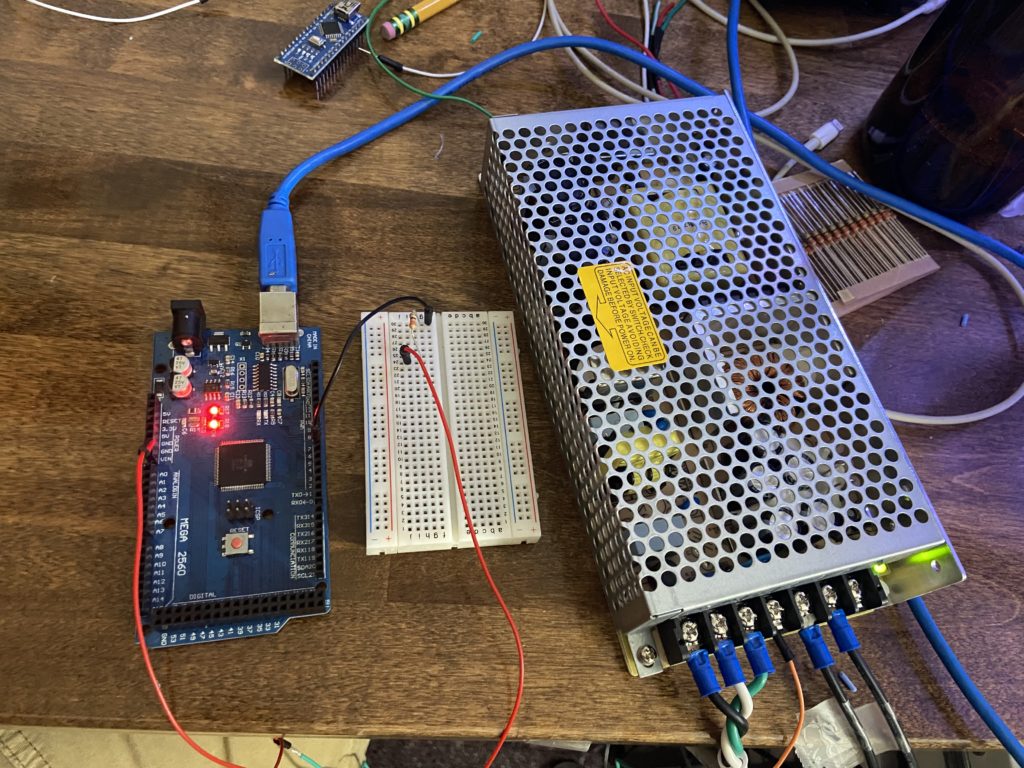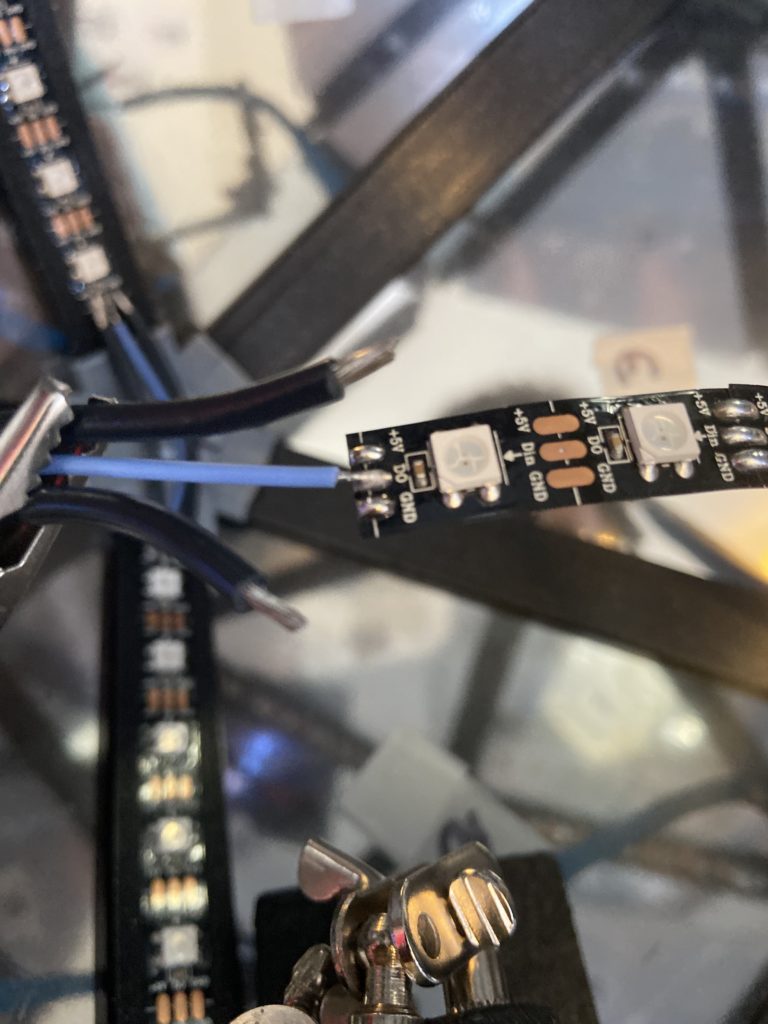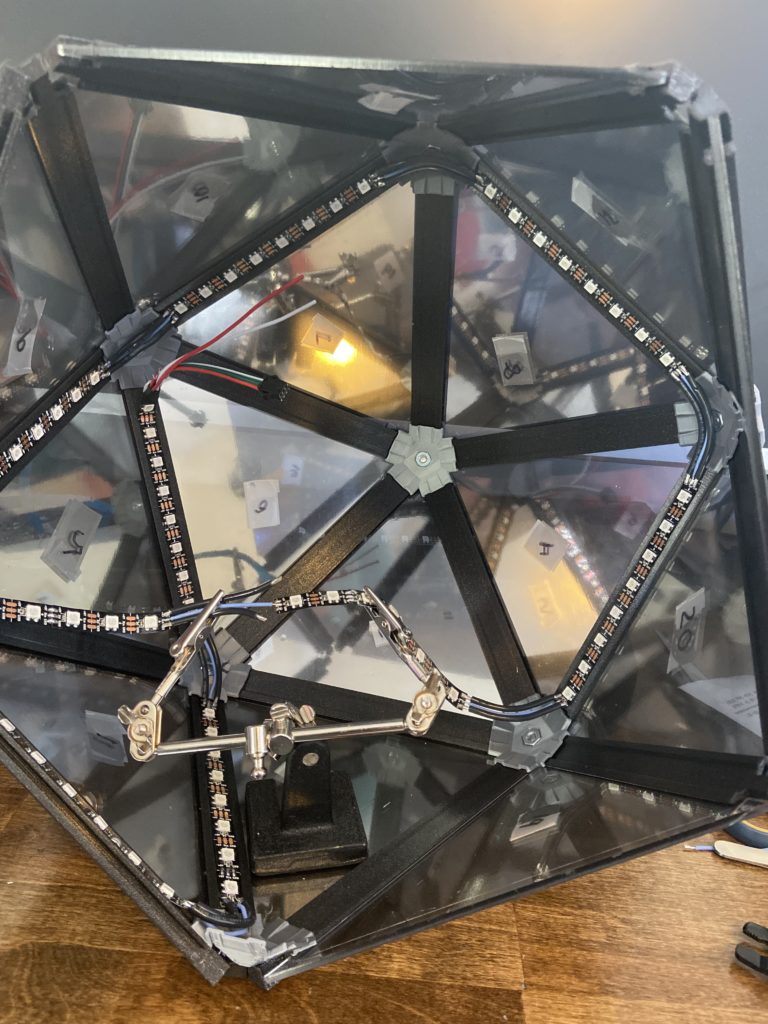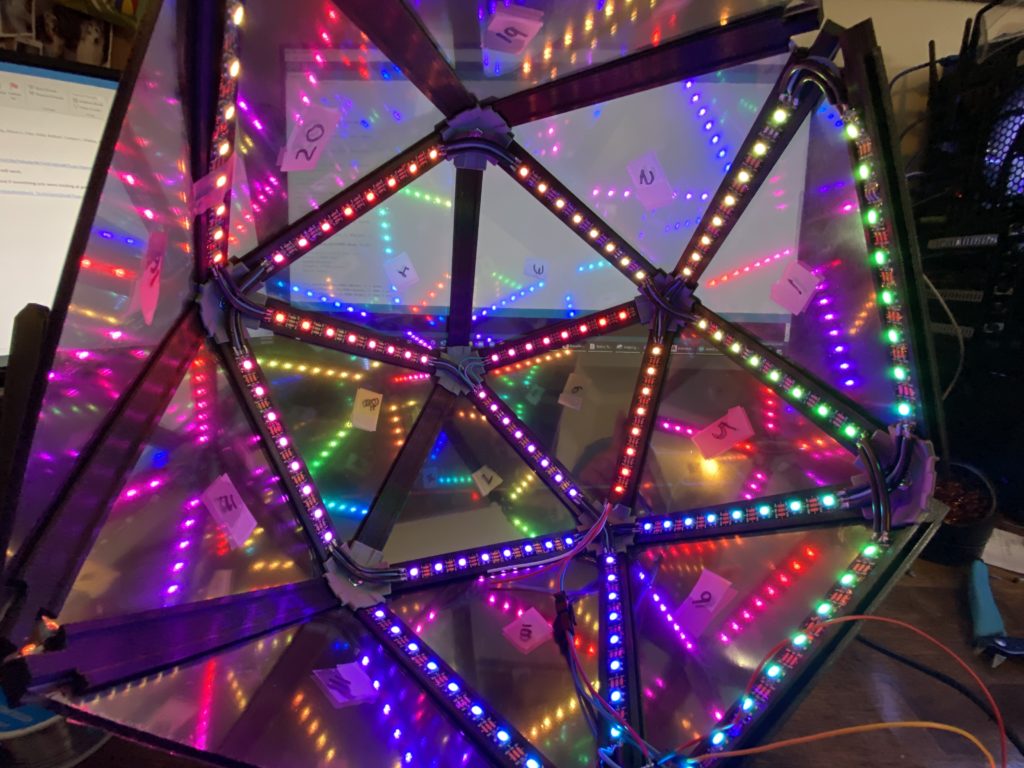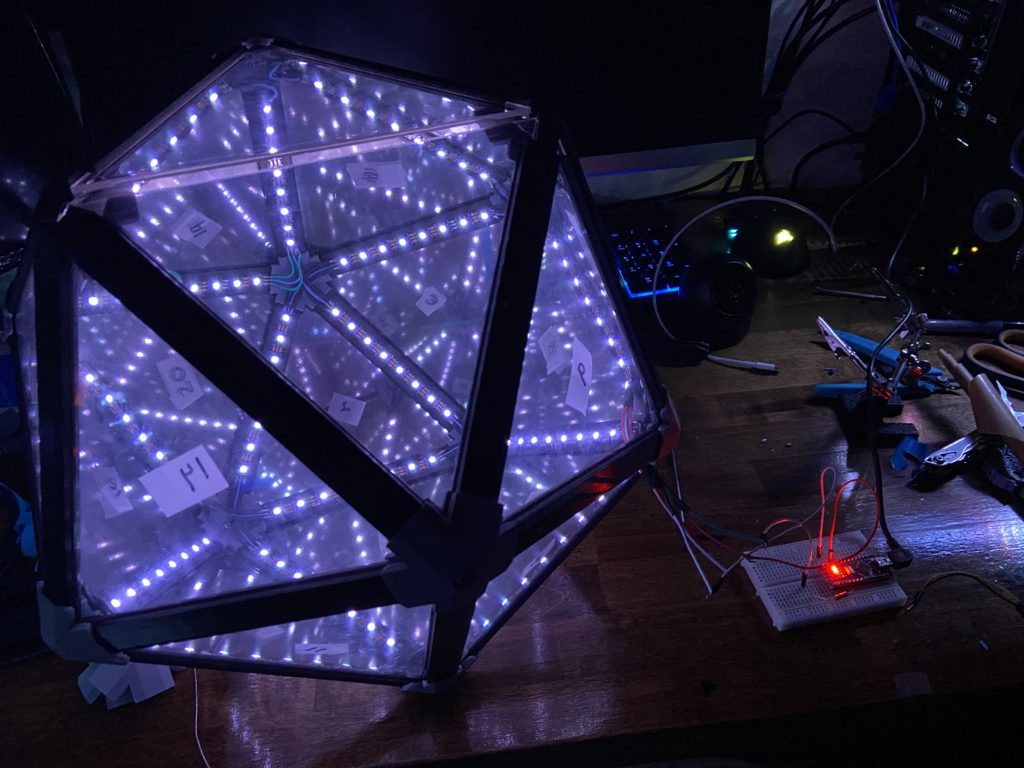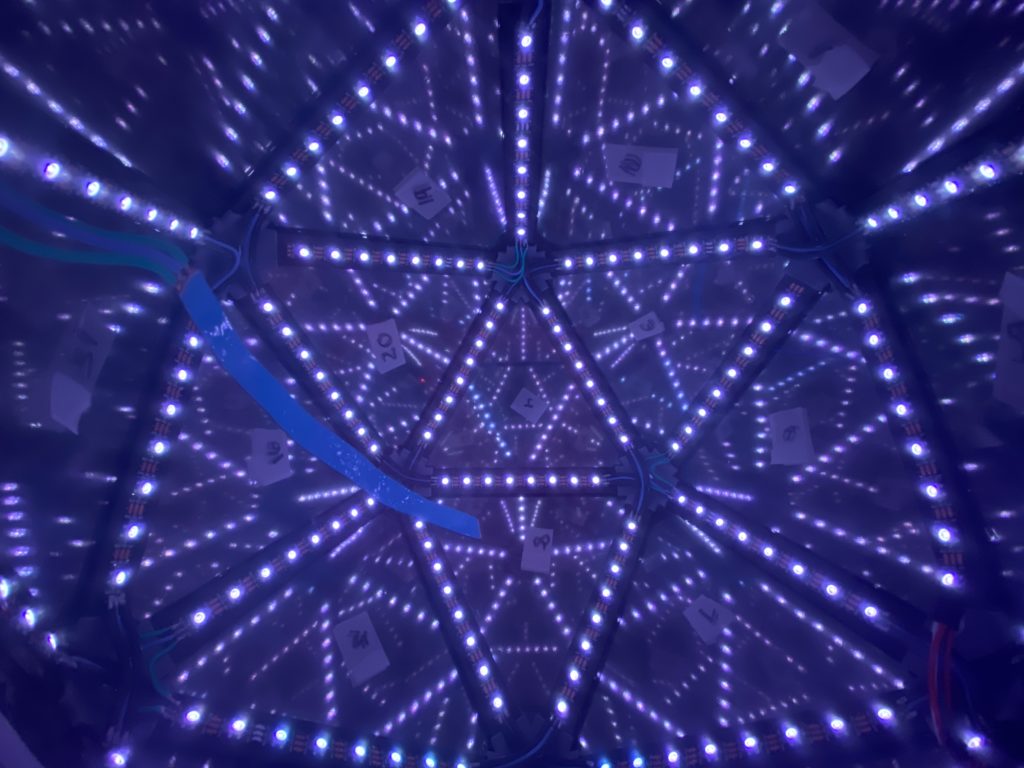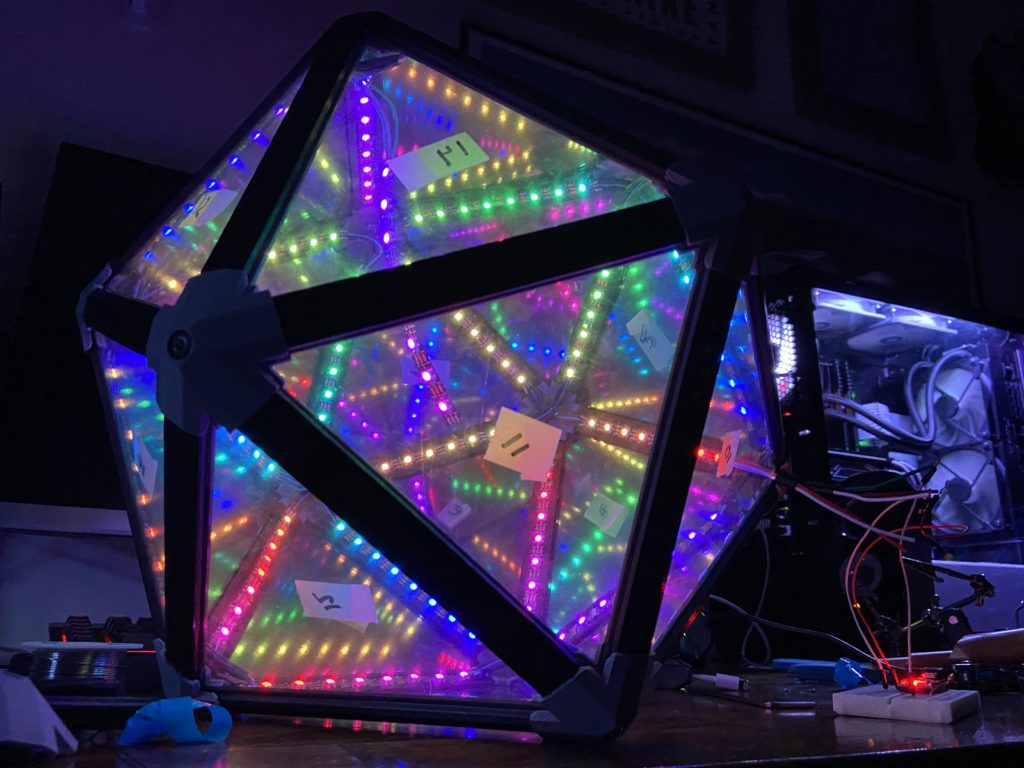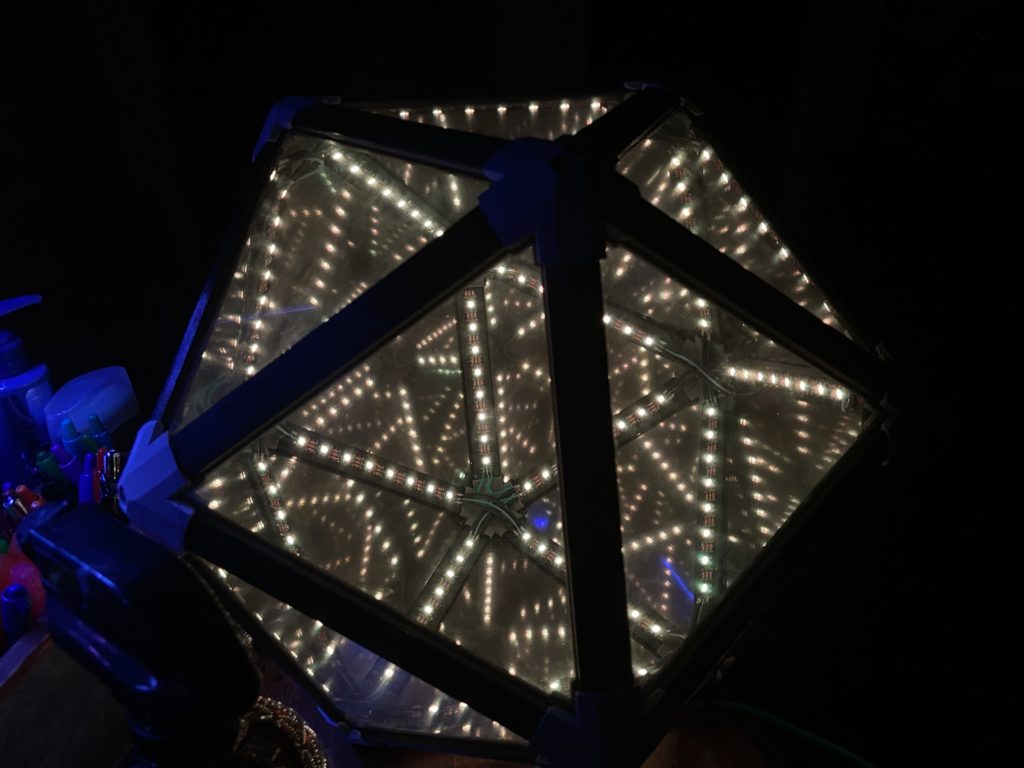This past week has been a magical series of ups and downs. I managed to finish printing everything and applied the one way mirror film to each piece of acrylic. After that came installing the LEDs. This took quite some thought due to the unique shape of the mirror. In order to control each LED individually, the LEDs should be wired in series. However, its impossible to travel through each side of an icosahedron once. I was able to wire 25 sections of 8 LEDs in series, with 5 other sections of 8 branching off in parallel.
Soldering each strand of LEDs proved to be difficult as well. Due to the high current draw of my LEDs, I had to use 16AWG wire for them. Soldering this size wire to the small contact pads on the strip is difficult, but having to contort it to the twists and turns inside the mirror added another degree of complexity.
Long story short though, I got it working and was extremely pleased with how it turned out. It would be a shame if something bad happened now right?
After building the mirror, I did a full test on low brightness using an Arduino Nano. While the current draw was over the limit for the Arduino, it worked. After doing that, I prepared to power the lights from my power supply and control the lights with the Arduino. Wired it up, turned it on, and nothing. I’m still not sure what was wrong, but the next thing I knew my Arduino was smoking. I checked my wiring (it was all fine) and tried with a second Nano I had, and poof. I tried a third time with an ESP32 and no lights lit up. Following a 30 minute panic session, I was able to borrow an Arduino from a friend and re-test everything. It turns out that I fried the logic circuit within the lights that interprets the data signal. Luckily, I only fried the first 3 sections of my LEDs (about 24 LEDs). I quickly replaced those and put everything back together and thankfully it worked as expected.
This week I want to work on cleaning the fingerprints off the surface and laser cutting a box for the power supply.
